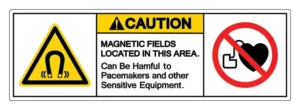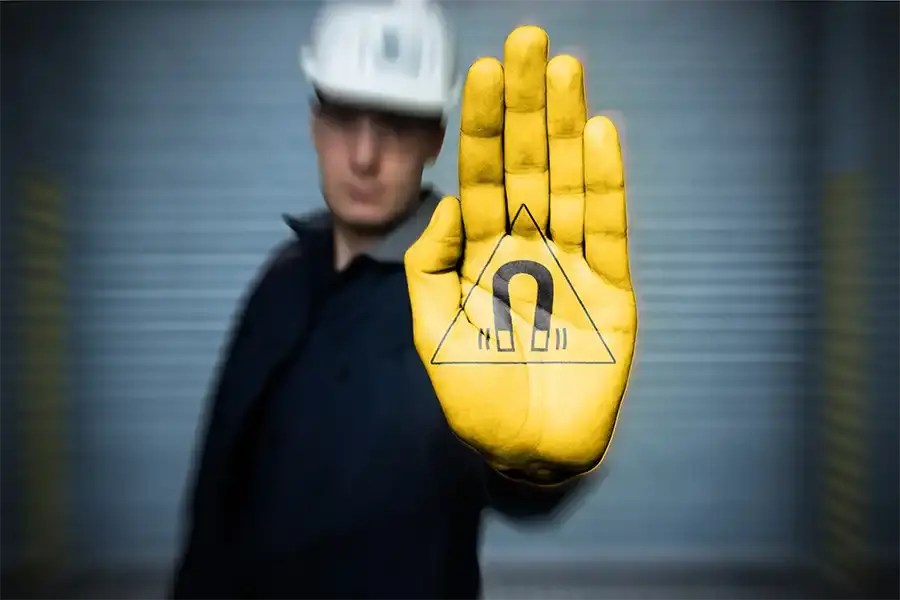Magnet Safety Information: Handle with Care
Magnets are powerful tools.
Our permanent magnets come packed with power to perform their jobs and meet your application’s needs. That also means they need to be treated with respect and handled carefully.
Following these guidelines will help ensure the safety of people, machines and work environments while protecting the integrity of the magnets. Please note: These guidelines are not comprehensive safety rules. If you have any questions or concerns about the performance and risks of magnets, give us a call at 1-800-390-5650 or send an email to info@vionamag.com.
Best Practices when using permanent magnets:
- Do not cut or drill magnets. Rare Earth materials are highly combustible.
- Do not burn magnets, which could create toxic fumes.
- To differing degrees, permanent magnets are hard, brittle, and prone to chipping and cracking, so special care should be taken when handling these materials. Use personal protective equipment -- such as gloves, safety glasses, and face shields -- when handling large and strong magnets. Magnets can splinter, shatter, or break if dropped or snapped together forcefully. Broken pieces can be sharp.
- Be aware that strong magnets could interact and even unexpectedly snap together at large distances. Avoid putting fingers, hands, or other parts of the body between magnets that could connect and cause pinches or injuries.
- Review your workspace before using magnets. Assess for risks such as other metal items that could be attracted to magnets.
- When multiple magnets of certain kinds are assembled in repelling positions, it is advisable to use mechanical fastening in addition to adhesives, since if adhesives were to give way, repelling magnets may dislodge and endanger personnel using them. Our design engineering team will be happy to assist you in designing housing for your magnet assemblies.
- Some types of permanent magnets are mechanically very weak and magnetically very strong. Receiving and assembly personnel, and any employees who handle magnets, should be trained on proper handling procedures, and understand the potential hazards associated with these kinds of magnets.
- Prevent magnets from coming near electronics, storage media and mechanical items affected by magnetic fields, including pacemakers and implanted heart defibrillators as well as credit cards. Keep magnets at least six inches away from these items to avoid damage and malfunction.

- Use caution when separating magnets. Magnets can be difficult to separate, and if done improperly, can cause injury or damage to the magnets. To separate magnets, slide them apart rather than pulling them apart. If necessary, use a plastic wedge or other non-magnetic tool to help separate them.
- Store magnets properly. When not in use, store magnets in a dry and cool place away from other magnets or magnetic materials. Do not stack magnets on top of each other or store them in a way that causes them to attract to each other. This will help prevent unintentional attraction and potential injury. Magnets should be stored with keepers to reduce the possibility of partial demagnetization. Avoid exposing them to high temperatures, as heat can demagnetize them over time.
- Avoid exposing magnets to strong magnetic fields, which can demagnetize permanent magnets, reducing their strength. Keep magnets away from devices that generate strong magnetic fields, such as MRI machines and large motors.
By following these general guidelines, you can ensure that your permanent magnets remain in good condition and continue to perform at their best. Remember to always handle magnets with care and respect their power.
Legal Disclaimer
This is not intended to be a complete list of safety warnings and regulations, but simply guidelines and advice for working with magnets. Viona Magnetics does not accept or assume any liabilities for damages or injuries resulting from the use of our products.
Viona Magnetics
349 W John St
Hicksville NY 11801
Tel: 1-800-390-5650
Fax: 1-888-243-9868
info@vionamag.com
